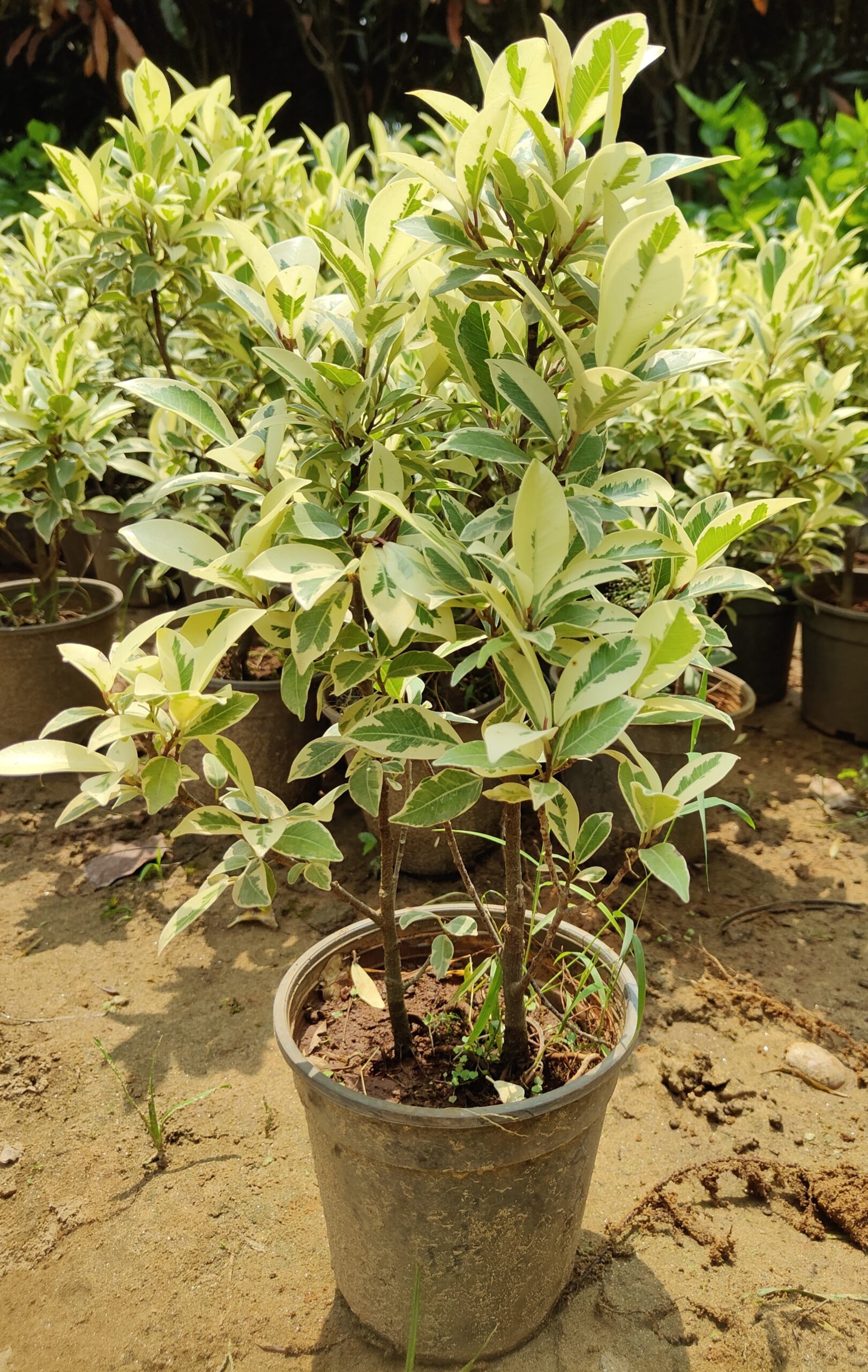
Growing a Starlight Ficus plant (Ficus ‘Starlight’) involves a few key steps to ensure it thrives.).
Light:
Place the plant in bright, indirect light. It can tolerate lower light conditions but will grow more slowly and may become leggy.
Water:
Water the plant when the top inch of soil feels dry. Ensure the pot has good drainage to prevent root rot.
Temperature:
Maintain a temperature range of 60-75°F (15-24°C). Keep it away from drafts, air conditioning, and heating vents.
Humidity:
This plant prefers higher humidity. If your home is dry, consider misting the leaves or using a humidity tray.
Soil: Use a well-draining potting mix. A mix formulated for houseplants or a blend of peat, perlite, and pine bark works well.
Fertilization:
Feed the plant with a balanced, water-soluble fertilizer every 4-6 weeks during the growing season (spring and summer.).
Pruning:
Prune as needed to maintain the desired shape and to remove any dead or damaged leaves.
Repotting:
Repot the plant every 2-3 years or when it becomes root-bound.
By following these guidelines, your Starlight Ficus should grow healthy and vibrant.
Here’s some more detailed information about growing and caring for a Starlight Ficus:
1. Light:
Optimal Light:
Bright, indirect sunlight is ideal. The plant can tolerate low light but may grow more slowly and develop fewer leaves.
Avoid Direct Sun:
Direct sunlight can scorch the leaves and cause damage.
2. Watering:
Consistency:
Water when the top inch of soil feels dry. Overwatering can lead to root rot, so ensure the soil is well-draining.
Drainage:
Use pots with drainage holes to prevent water from pooling at the bottom.
3. Temperature:
Ideal Range:
Maintain temperatures between 60-75°F (15-24°C).
Avoid Extremes:
Protect the plant from sudden temperature changes and drafts, which can cause leaf drop.).
4. Humidity:
Preferred Levels:
Ficus plants thrive in higher humidity. Aim for 40-60% humidity.
Improving Humidity:
Use a humidifier, place the plant on a humidity tray, or group it with other plants to increase the local humidity around it.).
5. Soil:
Type:
Use a well-draining potting mix. A standard houseplant mix or a mix of peat, perlite, and pine bark is suitable.
pH Level:
A slightly acidic to neutral pH (6.0-7.0) is best.
6. Fertilization:
Frequency:
Feed every 4-6 weeks during the growing season (spring and summer). Reduce or stop fertilizing in fall and winter when growth slows.
Type:
Use a balanced, water-soluble fertilizer. Follow the manufacturer’s instructions to avoid over-fertilizing.
7. Pruning:
Purpose:
Pruning helps maintain the plant’s shape, remove any dead or unhealthy leaves, and encourage bushier growth.).
Timing:
Prune during the active growing season (spring and summer) for best results.
8. Repotting:
Frequency:
Repot every 2-3 years or when the plant becomes root-bound. Signs include roots growing out of the drainage holes or a slow growth rate.
Process:
Choose a pot 1-2 inches larger in diameter than the current one and refresh the soil.
9. Pests and Problems:
Common Pests:
Watch for spider mites, aphids, and scale insects. Treat infestations with insecticidal soap or neem oil.
Leaf Drop:
This can be caused by stress, such as sudden changes in environment, over- or under-watering, or low humidity Ensure consistent care to prevent it.).
10. Propagation:
Method:
Starlight Ficus can be propagated through stem cuttings. Take a cutting of about 4-6 inches, remove the lower leaves, and place it in water or moist potting mix. Keep it warm and in bright, indirect light until roots develop.
By following these guidelines, you can create a healthy environment for your Starlight Ficus and enjoy its attractive, variegated foliage.).